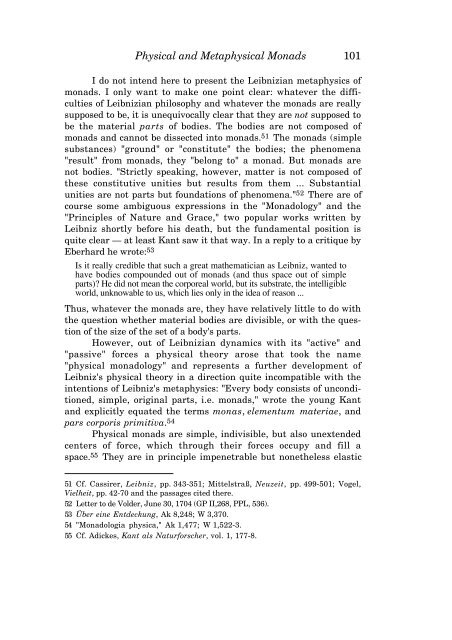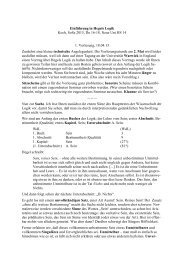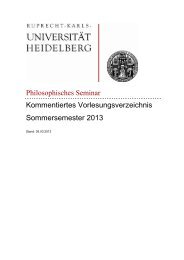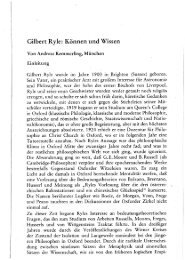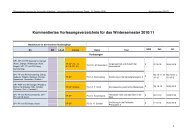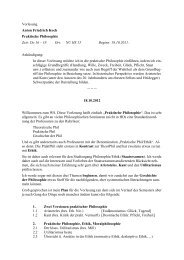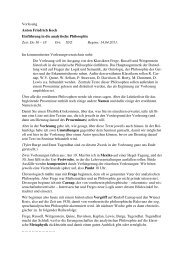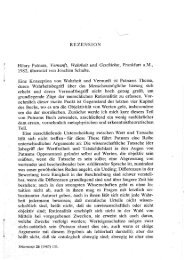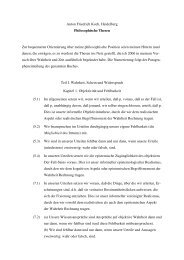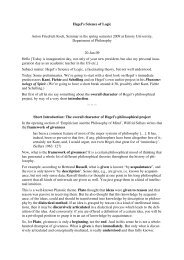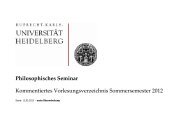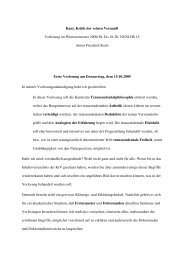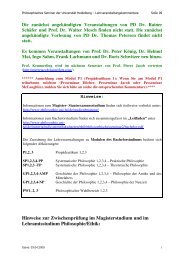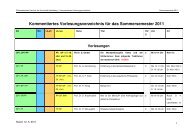KANT'S CRITIQUE OF TELEOLOGY IN BIOLOGICAL EXPLANATION
KANT'S CRITIQUE OF TELEOLOGY IN BIOLOGICAL EXPLANATION
KANT'S CRITIQUE OF TELEOLOGY IN BIOLOGICAL EXPLANATION
You also want an ePaper? Increase the reach of your titles
YUMPU automatically turns print PDFs into web optimized ePapers that Google loves.
Physical and Metaphysical Monads 101<br />
I do not intend here to present the Leibnizian metaphysics of<br />
monads. I only want to make one point clear: whatever the difficulties<br />
of Leibnizian philosophy and whatever the monads are really<br />
supposed to be, it is unequivocally clear that they are not supposed to<br />
be the material parts of bodies. The bodies are not composed of<br />
monads and cannot be dissected into monads. 51 The monads (simple<br />
substances) "ground" or "constitute" the bodies; the phenomena<br />
"result" from monads, they "belong to" a monad. But monads are<br />
not bodies. "Strictly speaking, however, matter is not composed of<br />
these constitutive unities but results from them ... Substantial<br />
unities are not parts but foundations of phenomena." 52 There are of<br />
course some ambiguous expressions in the "Monadology" and the<br />
"Principles of Nature and Grace," two popular works written by<br />
Leibniz shortly before his death, but the fundamental position is<br />
quite clear — at least Kant saw it that way. In a reply to a critique by<br />
Eberhard he wrote: 53<br />
Is it really credible that such a great mathematician as Leibniz, wanted to<br />
have bodies compounded out of monads (and thus space out of simple<br />
parts)? He did not mean the corporeal world, but its substrate, the intelligible<br />
world, unknowable to us, which lies only in the idea of reason ...<br />
Thus, whatever the monads are, they have relatively little to do with<br />
the question whether material bodies are divisible, or with the question<br />
of the size of the set of a body's parts.<br />
However, out of Leibnizian dynamics with its "active" and<br />
"passive" forces a physical theory arose that took the name<br />
"physical monadology" and represents a further development of<br />
Leibniz's physical theory in a direction quite incompatible with the<br />
intentions of Leibniz's metaphysics: "Every body consists of unconditioned,<br />
simple, original parts, i.e. monads," wrote the young Kant<br />
and explicitly equated the terms monas, elementum materiae, and<br />
pars corporis primitiva. 54<br />
Physical monads are simple, indivisible, but also unextended<br />
centers of force, which through their forces occupy and fill a<br />
space. 55 They are in principle impenetrable but nonetheless elastic<br />
51 Cf. Cassirer, Leibniz, pp. 343-351; Mittelstraß, Neuzeit, pp. 499-501; Vogel,<br />
Vielheit, pp. 42-70 and the passages cited there.<br />
52 Letter to de Volder, June 30, 1704 (GP II,268, PPL, 536).<br />
53 Über eine Entdeckung, Ak 8,248; W 3,370.<br />
54 "Monadologia physica," Ak 1,477; W 1,522-3.<br />
55 Cf. Adickes, Kant als Naturforscher, vol. 1, 177-8.


